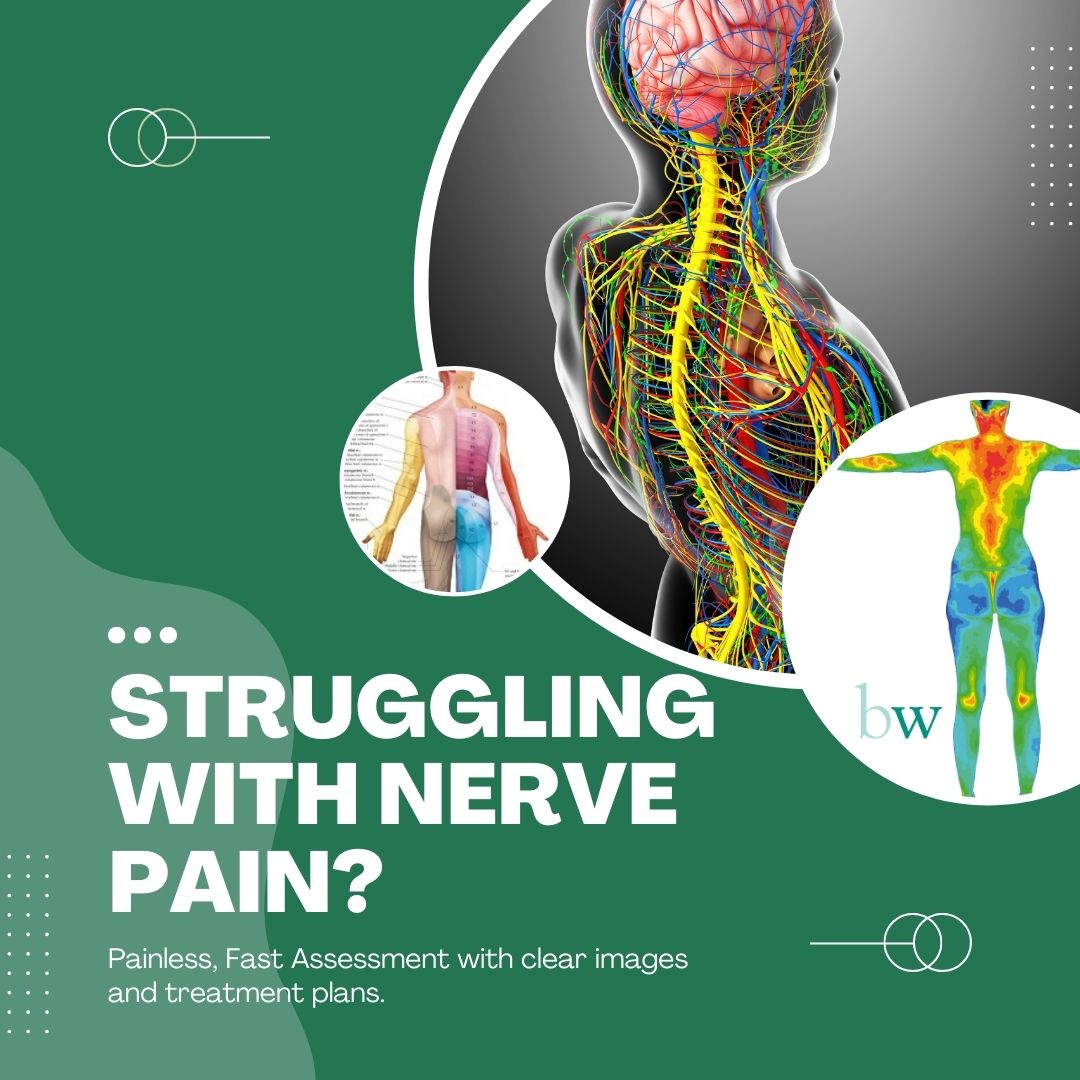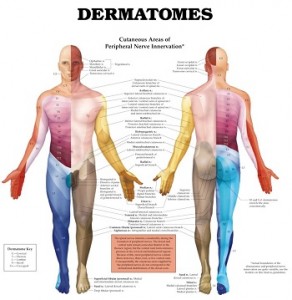
Struggling with nerve pain?
Painless, fast and detailed information followed by a clear treatment plan
Nerve pain is difficult to diagnose and treat. It moves, it’s not consistent after specific activities, it can affect a wide range of parts of the body and it can affect organ and hormone function as well as muscle function and cause pain.
This makes getting a useful answer and a clear treatment route hard.
And to make it worse, if you leave it too long it can start to affect more and more of your body.
The problems with nerve pain:
- Identifying it – it often moves around from place to place and changes
- Finding the root cause – where you feel pain may not be the problem area
- Treating it – medication often makes little difference and standard physical treatments offer only temporary relief.
And this is why you can be having the best tennis/golfers elbow treatment, the best carpal tunnel treatment, the best knee and leg pain treatment with no effect.
Because it’s actually a problem with the nerve supplying that area not that area itself. The pain comes from somewhere else. So you aren’t treating the root cause.
So how do we find that critical “somewhere else”?
Finding the root cause of pain
If the pain isn’t coming from where you feel it how do we find it?
- A thorough clinical and physical assessment – checking not just the painful area but also the areas that can refer pain and are connected to the painful area. This can take a while (which is why it often isn’t done thoroughly)!
- Thermal Imaging – a painless method to assess nerve function throughout the entire body
- Talking to you! I’ve previously listed various symptoms which give critical clues that the pain is related to nerves not the location – it jumps/moves, tingling, pins and needles, sharp or searing if any of these come up when you describe how you feel we’re going to include the nervous system in our check.
Now a key tool in all of this investigation is a system called Dermatomes.
So what’s a Dermatome?
A dermatome is an area of skin that is predominantly supplied by a specific spinal nerve.
There are 30 areas in total, covering the entire body. One for each squishy disc between the bony discs of the spine where a nerve exits the main channel.
And dermatomes follow a general pattern. So, if your pain keeps jumping about within a specific area, or you get tingling or pins and needles across a certain body part, breathing difficulties, loss of sensation or a feeling of cold in a particular part of your body, even a rash, we check to see if these correspond to a dermatome.
Then we can use this information to identify the nerve affected and check the spine and .
So Dermatomes are an amazingly useful diagnostic tool that we can use to identify the root cause of those difficult to treat nerve pain issues. Because if we treat the root cause the symptoms go away.
Clear Answers without pain
If you think this describes you and want to know more book our detailed Neural Assessment.
Combining Thermal Imaging with hands on Physiotherapy assessment for a detailed understanding of neurological and persistent pain.
Why this method?
Nerve conduction tests are painful and hyper focused – you need to know which nerve you want to test. If it’s a different nerve causing the issue than the one being tested (and there are lots!) then the test comes back clear. And you get no information. It also doesn’t look at the big picture, assessing each joint and muscle along the route of the nerve to identify where the adverse pressure is coming from.
For some patients these tests can also be uncomfortable as they pass an electric current through the nerve and measure the response.
Nerves run from your spine to . . . . everywhere! Every organ, every centimetre of skin, every muscle, ligament, tendon and joint. So to understand them we need to look . . . well, everywhere.
Particularly for patients who have been suffering for a while, where the area of discomfort has expanded over time and changed.
Thermal Imaging is fast, painless and as simple as having your photograph taken so no claustrophobia.
Conditions it might be relevant for:
- Carpal Tunnel
- Herniated discs
- Tarsal Tunnel
- Sciatica
- Shoulder Pain
- Fibromyalgia
- Whiplash
- Neck Pain
- Migraines and other headaches
- TMJ
- Neuralgia (particularly post treatment)
- Diabetic neuralgia
- Loss of function or muscle control
Next Steps
Not sure what’s best for you? Our Patient Care Coordinator can talk you through the options available both at the clinic and locally to make sure you get the best support possible.
If you’d like to book an appointment please contact us directly over email, or WhatsApp as preferred.


Leave a Reply